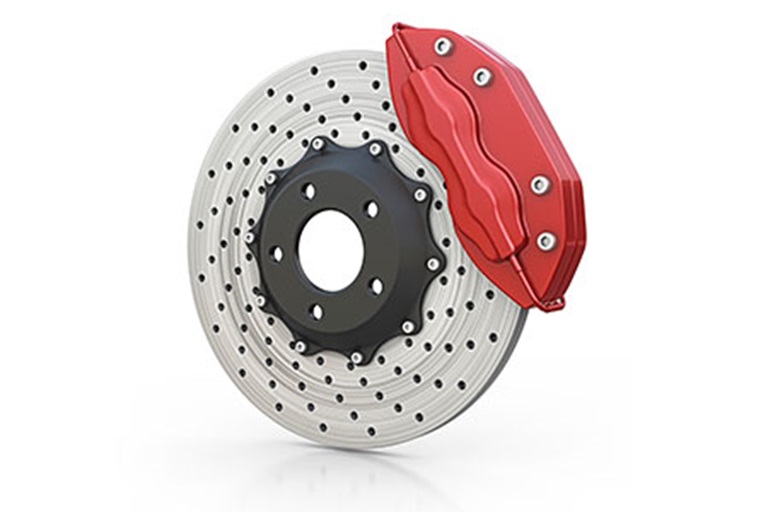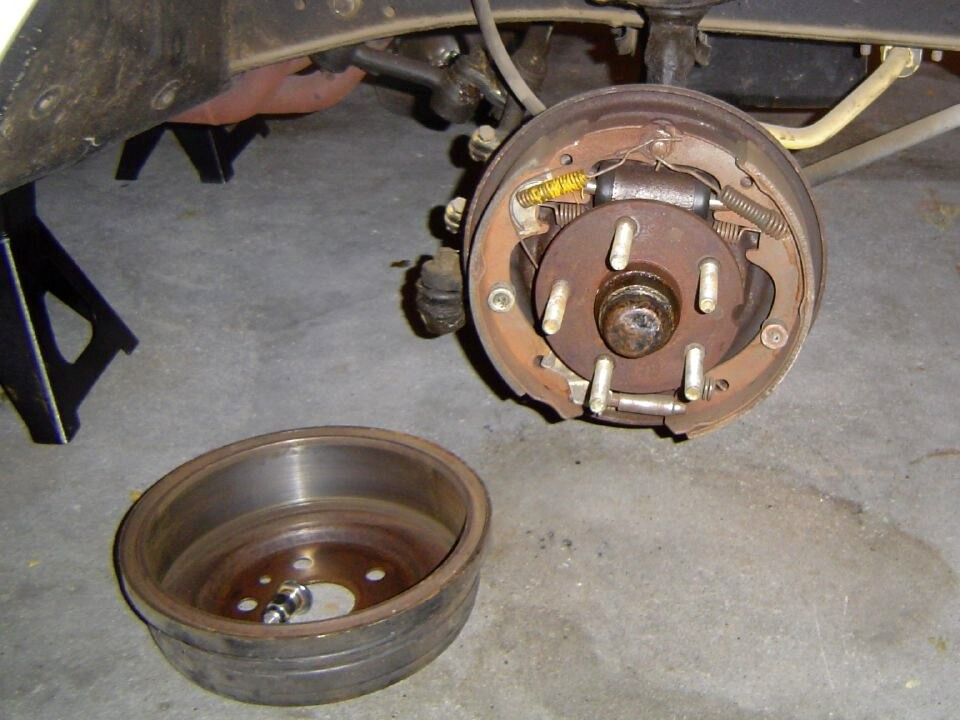Stopping power. It’s what separates a safe drive from a catastrophic one. Yet, most people barrel down roads every day with little thought to the intricate systems beneath their feet. The classification of brakes is more than just a technical formality—it’s a life-saving blueprint. From screeching halts to smooth decelerations, not all braking systems are born equal. Drivers face an unseen dilemma: their vehicles may not be equipped with the right type of brake for their driving style, terrain, or vehicle load. This silent mismatch breeds inefficiency, excessive wear, and, at worst, failure at critical moments.
Dig deeper, and the problem becomes clear. The classification of brakes spans mechanical, hydraulic, air, electric, and beyond—each with unique mechanics, applications, and advantages. Confusion runs rampant, especially when terms like regenerative, disc, drum, or electromagnetic brakes enter the mix. Without clear guidance, decision-making becomes a guessing game.
But there’s clarity on the horizon. This exploration into the classification of brakes will demystify each category, decode their inner workings, and show where each type shines best. Whether you’re a curious motorist, a budding engineer, or just someone who values precision—this journey into braking systems will help you stop smarter.
Breaking System

Braking systems are the unsung guardians of road safety, engineered to transform kinetic energy into controlled stillness. At their core, these systems aren’t just about stopping a vehicle—they’re about doing it with precision, predictability, and performance. Whether navigating serpentine mountain roads or halting abruptly in urban traffic, the efficiency of a braking mechanism can mean the difference between calm and calamity.
Modern vehicles incorporate a fascinating variety of braking systems, each tailored to distinct operational demands. Hydraulic brakes dominate everyday vehicles, offering fluid-based responsiveness. Air brakes, with their compressed force, reign in heavy-duty transport. Then there are regenerative braking systems, often found in electric vehicles, that recycle energy rather than waste it. The science behind these mechanisms is intricate, yet deeply purposeful.
Understanding the classification of brakes is pivotal. It spans mechanical, electromagnetic, pneumatic, and hybrid systems—each with unique engineering principles and use cases. From disc and drum brakes to servo-assisted and anti-lock braking systems, the classification of brakes provides a roadmap for innovation, maintenance, and safer mobility. In an age where vehicles are evolving faster than ever, a solid grasp of these braking systems ensures not just smoother rides, but safer ones.
Mechanical Brakes
Mechanical brakes are among the oldest yet most enduring innovations in vehicle safety. Their operation is deceptively simple—leveraging direct physical force through rods, cables, or linkages to create the friction needed to halt motion. Despite their analog nature, mechanical brakes are remarkably reliable, especially in applications where hydraulic or electronic systems might be overkill.
Typically found in bicycles, handbrakes, and older automobiles, mechanical brakes thrive in environments where ease of maintenance, cost-efficiency, and mechanical simplicity are paramount. They don’t rely on fluid dynamics or digital inputs—just pure mechanical advantage. In emergencies, especially when more complex systems fail, these brakes often serve as a dependable backup.
Within the broader classification of brakes, mechanical systems stand out for their tactile, no-nonsense engineering. They come in various forms—drum brakes, where shoes press outward against a spinning surface, or disc brakes, where pads clamp onto a rotor. Though often overshadowed by their hydraulic and electronic counterparts, their role in the classification of brakes remains foundational. In fact, many hybrid braking systems today still integrate mechanical components for redundancy and fail-safes. Their enduring presence is a testament to the beauty of straightforward design and mechanical mastery.
Hydraulic brakes
Hydraulic brakes have revolutionized modern braking systems with their finesse, consistency, and amplified stopping power. Unlike mechanical counterparts, these systems harness fluid dynamics—using incompressible brake fluid to transfer force from the pedal to the brake pads with seamless efficiency. The result is smooth, responsive braking with minimal physical effort.
The core mechanism involves a master cylinder, which pushes fluid through brake lines to activate pistons at each wheel. This controlled pressure ensures uniform braking across all wheels, making it especially effective in passenger cars, motorcycles, and light commercial vehicles. Add in the benefits of self-adjustment and reduced wear, and it’s clear why hydraulic systems have become the standard for modern mobility.
In the wider classification of brakes, hydraulic types are noted for their precision and adaptability. They can be paired with disc or drum brake assemblies, and are frequently integrated with advanced technologies like anti-lock braking systems (ABS) and electronic stability control (ESC). Their dominance in the classification of brakes stems from their superior modulation and reliability, even under demanding conditions. As vehicles become smarter and faster, hydraulic brakes continue to anchor safety at the heart of the driving experience.
Brake-by-wire
Brake-by-wire technology marks a bold departure from traditional braking systems. Instead of relying on mechanical or hydraulic connections, this system uses electronic signals to initiate braking commands. When the driver presses the brake pedal, sensors transmit data to an onboard computer, which then engages actuators at each wheel. The result is a quicker, more controlled response—one that adapts in real time to changing road conditions.
This futuristic approach eliminates many of the mechanical losses and inconsistencies found in conventional systems. It also opens the door to smarter vehicle dynamics, including advanced traction control, torque vectoring, and seamless integration with autonomous driving features. With fewer physical components, brake-by-wire systems reduce weight and simplify maintenance, while boosting precision.
In the evolving classification of brakes, brake-by-wire stands at the frontier. It blends elements of electronic, hydraulic, and mechanical braking, but ultimately defines its own category. As electric and autonomous vehicles rise in prominence, this innovative system is poised to become a mainstay in next-generation mobility. The classification of brakes is no longer just about physical force—it now includes digital control, algorithmic modulation, and the seamless fusion of software with steel.
Types of Brakes
Braking systems have evolved far beyond simple friction pads. Today, the classification of brakes encompasses a wide spectrum—mechanical, hydraulic, air, electromagnetic, and electronic. Each type caters to specific vehicle dynamics and performance needs. Disc brakes offer sharp, responsive halts, while drum brakes provide robust durability. Regenerative braking captures energy instead of wasting it. And brake-by-wire? It replaces levers and lines with precision-coded signals. In the modern era, the classification of brakes reflects not just how we stop—but how technology is redefining control, efficiency, and safety on every road.
Drum brakes

Drum brakes are a time-tested component in the world of automotive safety. Enclosed within a rotating cylinder, or “drum,” these brakes operate by pressing brake shoes outward against the inner surface of the drum. The resulting friction slows the wheel. Though compact and cost-effective, drum brakes also boast impressive holding power, which makes them ideal for rear-wheel applications and parking brakes.
In the broader classification of brakes, drum brakes fall under mechanical and hydraulic categories, depending on the actuation method. Their sealed design offers protection from debris and moisture, extending longevity in rugged conditions. While modern vehicles often favor disc brakes for primary stopping, drum systems continue to serve with quiet reliability. Their simplicity, durability, and low maintenance requirements ensure that drum brakes still hold their ground in the evolving landscape of vehicle braking systems. In the diverse classification of brakes, they remain a foundational technology with enduring relevance.
Disc brakes

Disc brakes have become the gold standard in modern vehicle braking systems, prized for their responsiveness and heat dissipation. The system operates by clamping brake pads onto a spinning rotor, or “disc,” creating friction that slows the wheel. This design allows for quick engagement and superior performance, especially under high-speed or high-load conditions.
Positioned prominently within the classification of brakes, disc brakes typically fall under hydraulic or electronic systems. They are favored in performance cars, motorcycles, and even bicycles for their consistency and stopping power. Ventilated discs, slotted rotors, and ceramic pads offer enhanced performance, catering to diverse driving demands. Unlike enclosed drum systems, disc brakes remain exposed—allowing better cooling and reducing brake fade during prolonged use.
In the evolving classification of brakes, disc brakes stand as a testament to engineering efficiency and control. With each precise stop, they reinforce their place at the heart of modern automotive safety.
Hand Brakes

Hand brakes, also known as parking brakes, serve a specific yet crucial role in vehicle control—keeping a stationary vehicle securely in place. Typically activated by a lever, button, or pedal, these brakes function independently from the main braking system. Their design often relies on a simple mechanical linkage that engages the rear brakes, applying consistent tension to prevent unintended movement.
Within the classification of brakes, hand brakes are usually categorized as mechanical brakes, though modern versions—electronic parking brakes (EPB)—introduce digital actuation with enhanced features like automatic hold and hill-start assist. Whether manually or electronically controlled, their core purpose remains unchanged: securing vehicles when parked, especially on inclines or uneven terrain.
Though less glamorous than high-performance disc systems, hand brakes embody reliability. In the broader classification of brakes, they remind us that control isn’t just about motion—it’s also about stability, assurance, and the simple peace of staying still when it matters most.
Popular Modern Braking Features
Modern braking systems come packed with intelligent features that go far beyond basic stopping power. Anti-lock Braking Systems (ABS) prevent wheel lock-up, maintaining steering control during sudden stops. Electronic Brakeforce Distribution (EBD) fine-tunes braking pressure across axles for optimal stability. Brake Assist (BA) senses emergency braking and boosts pressure instantly. These innovations, now standard in many vehicles, reflect a new frontier in the classification of brakes—where digital precision meets mechanical reliability. Advanced systems like regenerative braking and autonomous emergency braking (AEB) further elevate safety, efficiency, and driver confidence, making braking smarter and more intuitive than ever before.
ABS

Anti-lock Braking System (ABS) is a cornerstone of modern automotive safety, engineered to prevent wheel lock-up during intense braking scenarios. By maintaining rotational motion, ABS allows the driver to retain steering control—especially vital on slick or uneven surfaces. This system is particularly effective in emergencies, where panic braking could otherwise lead to skidding or loss of control.
Within the broader classification of brakes, ABS represents an electronic enhancement to hydraulic braking systems, seamlessly blending mechanical components with real-time sensor feedback. It’s not just about stopping—it’s about stopping safely, predictably, and with control intact.
How ABS Works:
- Sensors monitor wheel speed continuously.
- Controller detects rapid deceleration or impending wheel lock-up.
- Valves modulate brake pressure on individual wheels.
- Pump restores pressure after valve release to maintain optimal braking force.
- Cycle repeats multiple times per second for responsive, balanced braking.
ABS transforms raw stopping power into intelligent intervention, elevating both vehicle safety and driver confidence.
Electronic Brake-force Distribution (EBD)
Electronic Brake-force Distribution (EBD) is a refined braking enhancement that works in tandem with ABS to intelligently allocate braking pressure across all wheels. Rather than applying uniform force, EBD assesses real-time factors like load distribution, speed, and road surface to fine-tune brake pressure for each wheel. This results in superior balance, reduced stopping distance, and minimized risk of skidding—especially when carrying passengers or cargo.
In the modern classification of brakes, EBD is classified as an electronic control system, adding adaptability to traditional hydraulic braking. It’s a quiet guardian that enhances stability in complex, real-world driving conditions.
How EBD Works:
- Sensors track wheel speed, load weight, and vehicle dynamics.
- Electronic Control Unit (ECU) calculates optimal brake force per axle.
- Brake force is varied between front and rear, or left and right, in real-time.
- Coordination with ABS ensures balanced braking even under emergency stops.
EBD brings precision where uniformity once ruled, shaping a smarter, safer driving experience.
Electronic Stability Control (ESC)
Electronic Stability Control (ESC) is a dynamic safety system designed to keep vehicles stable during sharp turns, sudden maneuvers, or slippery conditions. It doesn’t just react—it anticipates. By monitoring the driver’s intended path and comparing it to actual vehicle behavior, ESC can intervene automatically to prevent understeer or oversteer. In critical moments, it subtly applies brake force to individual wheels or reduces engine power to keep the vehicle on course.
Within the classification of brakes, ESC is part of the advanced electronic braking systems, combining data, sensors, and micro-adjustments to deliver proactive safety far beyond traditional mechanics.
How ESC Works:
- Steering angle and yaw sensors detect the vehicle’s intended and actual direction.
- Wheel speed sensors monitor rotational movement for signs of slip.
- Electronic Control Unit (ECU) analyzes data in real-time.
- Brakes are applied selectively to one or more wheels.
- Engine torque may be reduced to regain control and restore stability.
ESC doesn’t just help you stop—it helps you stay on track.




